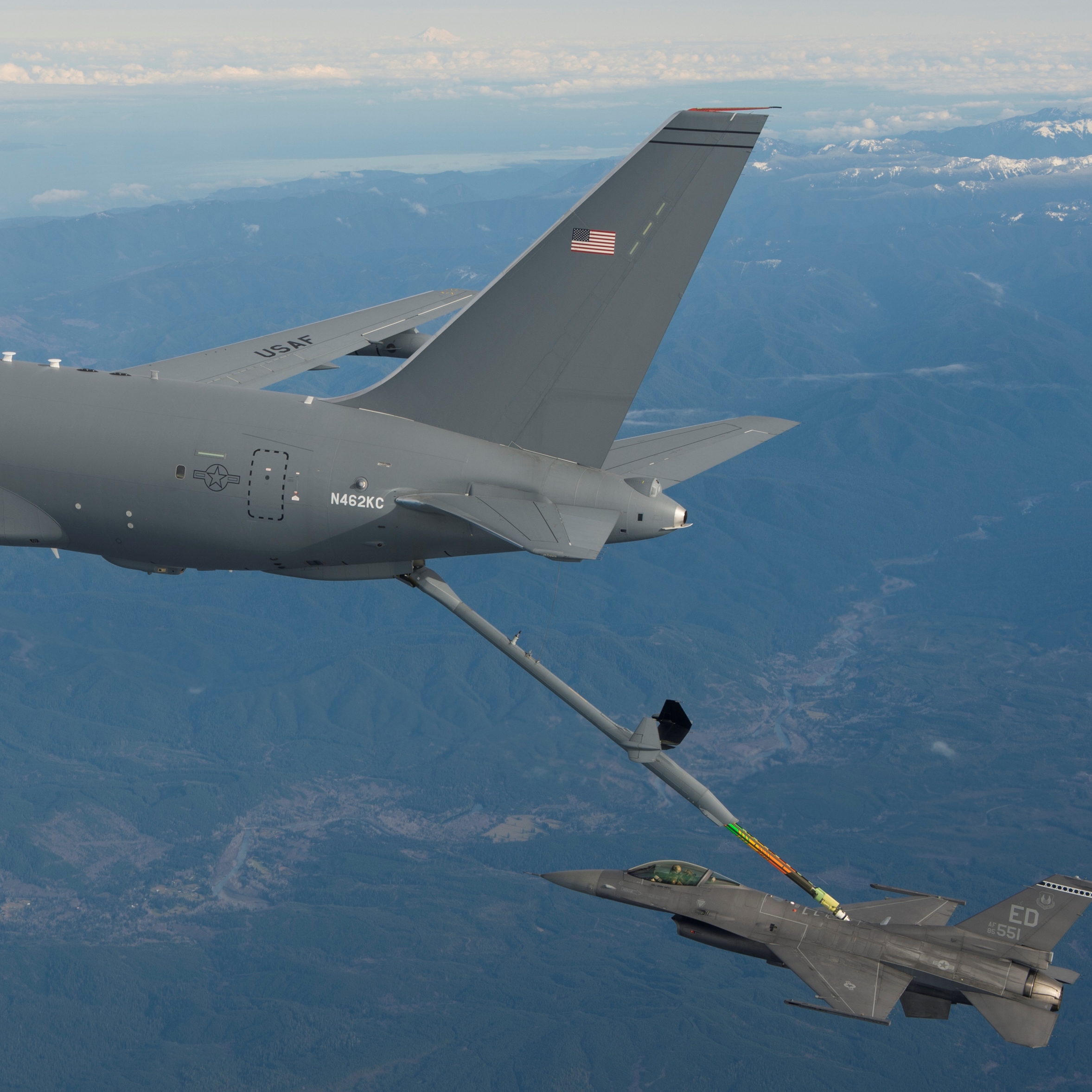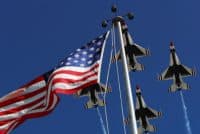
On Sunday, Boeing Co. (NYSE: BA) successfully transferred 1,600 pounds of fuel from its new KC-46A tanker to an F-16 fighter jet during a flight over eastern Washington state. This was the first test of the new tanker’s refueling capability, and now there will be a series of tests on the tanker’s ability to fuel five additional types of aircraft.
If the aircraft can pass all six tests, Boeing will have reached a point in the development of the new plane when the Air Force will formally approve the beginning of production. Anticipating that approval will be received, Boeing has been building production tankers on its own to make up for delays that have wiped out the slack built into the schedule. A decision to begin production is supposed to be made in April, following completion of more flight tests.
In Sunday’s test, an operator based in the tanker lowered a rigid boom to pass fuel to the F-16. The KC-46A also has flexible booms designed to refuel U.S. Navy and Marine planes. The flexible booms remain to be tested as does the new tanker’s ability to receive more fuel from older KC-10 tankers.
The next test is expected later this week, when the new tanker attempts to pass fuel through the rigid boom to an Air Force C-17 transport. The rigid boom will also be tested with the Air Force A-10 Thunderbolt (Warthog) while the F/A-18 fighter and AV-8B Harrier attack jets will test the flexible-hose refueling system.
Under the terms of Boeing’s contract with the Air Force, 18 operational tankers are due to be delivered by August 2017. A total of 179 KC-46A tankers are expected to be built to replace the fleet of KC-135s and KC-10s that are decades old.
Boeing’s shares closed up about 1% on Friday, at $124.61 in a 52-week range of $115.14 to $124.61, and were down fractionally Monday morning to $124.22.
It’s Your Money, Your Future—Own It (sponsor)
Retirement can be daunting, but it doesn’t need to be.
Imagine having an expert in your corner to help you with your financial goals. Someone to help you determine if you’re ahead, behind, or right on track. With SmartAsset, that’s not just a dream—it’s reality. This free tool connects you with pre-screened financial advisors who work in your best interests. It’s quick, it’s easy, so take the leap today and start planning smarter!
Don’t waste another minute; get started right here and help your retirement dreams become a retirement reality.
Thank you for reading! Have some feedback for us?
Contact the 24/7 Wall St. editorial team.




